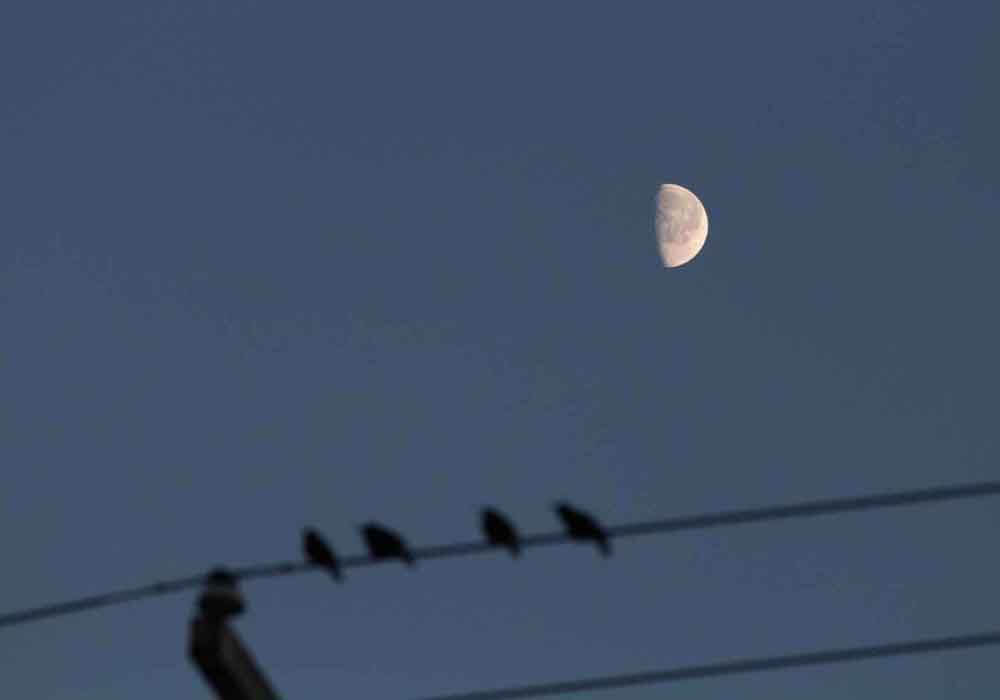How Do Birds Sleep at Night?
We always see birds flying around and perching, but it is a lot less common to see them sleep. Do they go to their nests and hunker down? What do they do exactly? How do birds sleep at night?
Birds sleep at night in a safe spot, but one-half of their brain remains awake and alert. This is known as unihemispheric slow-wave sleep, and it allows birds to rest while remaining alert for potential threats. When safety is assured, birds can experience deep sleep in both parts of their brain.
Read on to learn more about how birds sleep at night, where they sleep, and how they keep warm while sleeping.

How Sleep Works in Birds
Like most prey animals, most birds don’t have the luxury of calling it a night and sleeping blissfully; they must stay vigilant to avoid becoming another animal’s dinner.
Additionally, migratory birds are known to cover vast distances—sometimes across oceans—to find safer breeding/nesting grounds and richer food sources. During those migrations, birds can sometimes fly for several days non-stop!
So, how are birds able to rest when they have to be alert for threats or when traveling for several days or weeks without stopping? After all, sufficient sleep is crucial for a healthier immune system, optimal brain functioning, and replenishing energy levels.
It turns out that birds don’t have to sleep the way we do i.e., with both parts of our brain resting. This is all thanks to the unihemispheric slow-wave sleep (USWS) phenomenon.
Also known as asymmetric slow-wave sleep, USWS is a type of sleep where one hemisphere of the brain remains alert while the other is resting. During USWS, the eye opposite the sleeping half of the brain stays open. For example, if the left hemisphere is the one getting rest, the bird’s right eye will remain open.
While not ideal, one can see the benefits USWS offers birds. For starters, it ensures that birds that are vulnerable to predation can react immediately to incoming threats. Additionally, migratory birds can get some sleep while still being able to navigate and stay on course, not to mention not drifting away from the rest of the flock.
Nevertheless, as mentioned, birds are also capable of bihemispheric slow-wave sleep (BSWS), where both brain hemispheres are at rest. However, the environmental conditions have to be ideal for a bird to allow itself BSWS. For example, your pet bird can indulge in BSWS since it knows that there are no predators out to get it in the confines of your home. Migratory birds can also get BSWS when they get to habitable grounds, allowing them to pay off their sleep debt.
Interestingly, wild flocking birds, such as the mallard, can choose between USWS and BSWS depending on their position in the group. Flocking birds tend to cuddle as a group to keep warm at night. It has been observed that individuals in the middle display signs of BSWS while those at the ends exhibit signs of USWS.
This might be due to the fact that the birds at the edge of the flock are at higher risk of predation, thus having to sleep with one eye open. In contrast, those in the middle are relatively safer, which allows them to indulge in the luxury of full sleep.
How Long Do Birds Sleep at Night?
The effects of sleep deprivation can be life-threatening to birds, as is the case with humans. Most birds require 10 to 12 hours of sleep to feel fully rested. That is why diurnal birds (bird species that are active during the day and sleep at night) typically hunker down when darkness sets in around 7 pm, waking up at the crack of dawn around 5 am.
Nocturnal species—those active at night, such as owls—may also sleep throughout the day, waking up when dusk sets.
However, rarely do wild birds sleep soundly through the night. Instead, they may take numerous naps. The same applies to migratory birds who need to be essentially half awake to avoid going off course.
Since pet birds do not have any pressing reasons to remain alert while sleeping, make sure the conditions around their abode are conducive to getting a good night’s rest. This means switching off the lights in their room when dusk sets in and minimizing noise. As mentioned, sufficient sleep is essential for birds' physical and psychological health. A well-rested bird is healthier and happier.
Where Do Birds Go To Sleep at Night?
When it comes to the question how do birds sleep at night safety is the first consideration for a wild bird looking for somewhere to sleep. The other factor is comfort, in which warmth plays a great role.
For most birds, spots or areas that seem to offer that safety and comfort include tree cavities, dense vegetation, and tree canopies.
Smaller birds often sleep perched next to tree trunks. Trunks hold heat after a day of sunshine and they vibrate when a predator tries to approach the sleeping bird.
Birds adapted to a watery environment, such as geese, ducks, flamingos, and water herons, typically sleep floating on or standing in the water. Doing this allows them to take advantage of the vibrations or ripples that occur in the water, using them as warning signals for potential threats in the water. Some of these birds will even find an island to roost on.
How Do Birds Keep Warm at Night While Sleeping?
Birds have several physiological and behavioral adaptations to combat the night’s colder temperatures.
Their first line of defense against the cold is a set of downy feathers below their flight feathers. The downy feathers are primarily used for keeping birds warm. They even have an oil coating for further insulation. This oil comes from a gland located near the bird’s tail. When temperatures drop, most birds fluff up their downy feathers, preventing heat loss while providing an extra layer of protection from the elements.
Tiny birds, such as black-capped chickadees, use shivering as a cold defense mechanism. Shivering allows them to raise their internal body temperature, balancing out the heat loss occurring due to the colder temperatures at night. However, this strategy requires lots of energy, which explains why chickadees are pound-for-pound the biggest eaters in the avian kingdom.
Flocking birds cuddle to share body heat. This explains why chickens huddle together at night.
Some birds enter a state of torpor, which is essentially hibernating. Torpor involves slowing down the metabolism and thus body temperature, allowing the bird to survive using the least amount of energy possible.
Most birds enter torpor during winter when temperatures are freezing and food is scarce. Nonetheless, as you can imagine, being in a torpor puts a bird at high risk of predation, as it takes time to get in and out of that state.
Finally, during cooler nights, birds typically tuck their beaks and one leg into their feathers to minimize surfaces exposed to the cold air.
How Do Birds Sleep At Night?...Conclusion
Birds require sleep but go about it differently from you and me. Like humans, they can experience bihemispheric slow-wave sleep where both parts of the brain rest simultaneously, resulting in sufficient rest.
However, most birds opt for unihemispheric slow-wave sleep, where one hemisphere sleeps, and the other stays alert for potential threats or to help the bird navigate during long-distance migrations.
While unihemispheric slow-wave sleep might not be ideal, it is necessary for birds. Most birds pay off that sleep deficit by taking numerous naps throughout the day, allowing them to function optimally.
Back To The TOP Of This How Do Birds Sleep At Night Page

About the Author...
Richard Worden, a dedicated bird lover for over 20 years, I love to share my in-depth knowledge and passion for birds. Read more About Me and my expertise in this field.
- We Know Birds HOME ›
- Bird Behavior Facts and Information ›
- How Do Birds Sleep At Night?



